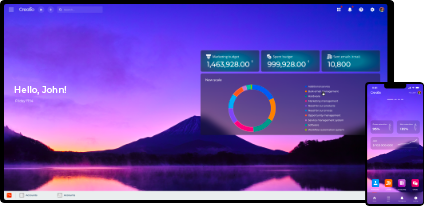Churn management for SMB without magic and data mining - II
Previously we found out why data mining and BI tools can’t help small and mid-size companies prevent churn. We also outlined steps of a churn management campaign, discovered how to calculate customer lifetime value and how to gather feedback right. Now it’s time to go on and define and collect factors that have an impact on customer churn decision.
It could be internal factors (a wide range of disadvantages and weak characteristics of your product/service, business model, skills, market position etc.) as well as external (activities of competitors, changes in customer’s priority etc.). Of course the right way is to minimize influence of these factors and improve performance. Unfortunately it takes some time and after all it could even be unachievable. But it is very useful to know them, to clarify their potential impact and use this knowledge in planning churn prevention campaigns.
After matching customer feedback and defining internal/external factors, company can go further to discovering symptoms (patterns of customer behaviour) which would cause decreased level of cooperation and a possible shift to another supplier. It can be complaints, delays in delivery, reduction of purchases as well as negative comments on Twitter or Facebook. For every single industry different indicators could be enlisted.
Symptoms and factors (they are mentioned earlier) should be qualified and marked according to their potential influence and the value of a customer. All symptoms can be classified in 2 types: critical (intensive event which alone could cause a churn) or recapitulative (summary of negative customer experiences). Emergence of symptom(s) should be used as a trigger to start reactive action (or flow of actions) to prevent churn.
Evaluation of emotions is also extremely important. For instance in BPMonline CRM we suggest customers to choose a mood (kit of smileys) after every single communication. A customer may not have a formal reason for dissatisfaction but actually might be dissatisfied with communications themselves.
Let’s go in depth with a few examples:
- A company operates in business travel industry. One of their customers uses business travel services to participate in an annual conference. Critical symptom was that the customer postponed a meeting from company side and didn’t initiate a consideration about future event. The company should react on this situation rapidly and ensure immediate dialog and actions.
- An express delivery company delayed a shipment. A customer that didn’t receive his delivery on time, called the contact center. His mood during the call to the contact centre was marked as “unhappy” and he answered with low marks for customer satisfaction survey. A bunch of such events (recapitulative symptoms) shows that the customer received a really negative experience. It’s time to have an honest conversation for not getting him to leave.
I hope now you have at least a slight idea of how to define and collect impact factors and discover possible symptoms. In the final post I advice some tools for you that will help you build effective churn management campaign. Stay tuned.
You might also like

- Customer experience and service






